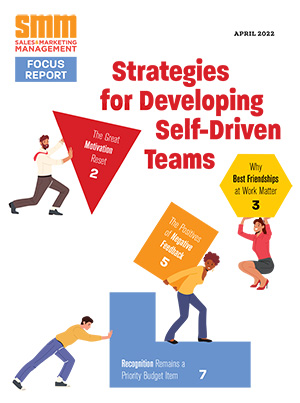If you take one thing away from this piece, make it this: Marketers who automate content experimentation with AI gain an express ticket to faster insights, better performance and a true edge over the competition.
If your approach to content experimentation still centers on basic A/B tests or slow, manual adjustments, you’re missing out. Over the past few years, content experimentation has come quite a long way – and so have the tools at our disposal. AI and automation now allow marketers to test faster, optimize smarter, and uncover opportunities that would have been invisible just a few years ago.
Want in on those opportunities?
Here’s how forward-thinking teams use AI automation to take content experimentation further – and how you can too.
Use Generative AI to Jumpstart Content Ideas
The content creation process has traditionally relied on a mix of brainstorming, trend analysis and gut instinct. That’s still important. However, AI can make this process faster, more informed and more iterative – especially at scale.
With generative AI, marketers can spin up detailed content variations in seconds.
Need five different headlines to test? Done.
Want to adjust and preview a set of email banners or social ads in different sizes and formats under different conditions? Easy.
Generative AI also helps expand creative thinking, giving you approaches and formats that might not have made the first cut in a manual process. Whether you’re producing text, images, video or product layouts, AI expands your options without bogging down your team.
Do This Now
Start treating generative AI as a creative partner, not just a production tool. Use it to generate ideas and test wider content ranges faster.
Design Your Experiments for Speed and Scale
The old way of testing – running one test at a time and often waiting weeks for results – is officially outdated.
AI-driven experiment design makes it possible to queue up multiple tests in advance, layer in multivariate options (e.g., headlines, visuals, CTAs), and continuously refine the approach as data rolls in.
What does this mean for you? Instead of a single round of content testing, it may look like setting up a sequence: Test five headlines, three background images, four CTAs and two different personalization algorithms, automatically identify the best-performing content elements, then launch a second wave of tests to refine even further. Rinse and repeat.
All this can run automatically, meaning you’re testing and learning faster than your competitors.
Do This Now
Build an experimentation framework that includes pre-set criteria for success (e.g., goal events, statistical significance, confidence intervals) and allows for constant iteration—not just a single test.
Automate Optimization in Real Time
Even the smartest test plan loses value if you wait too long to act. Unfortunately, many people treat content testing as a quarterly review.
AI-driven optimization flips that script.
As soon as your performance data starts trickling in, AI can automatically promote winning content, pause underperformers, and trigger new experiments across channels. And it can do all of this without human intervention.
Do This Now
Stop thinking of content testing as a campaign checkpoint. Make it an always-on process, in which AI handles adjustments in real time based on actual performance.
Use AI-Powered Reporting to Glean Hidden Insights
Most modern content reporting focuses on surface-level data: clicks, conversions, and engagement. That’s useful, but it’s not enough.
AI-powered reporting can surface patterns and performance differences you would never catch manually.
For example, what if one piece of content performs best in the Midwest, but a different version wins in California? What if iPhone users respond to one message, whereas Android users prefer another?
With the right AI tools, these granular insights are baked into your reporting. From there, they fuel smarter hypotheses for your next round of experimentation.
Do This Now
Push your reporting beyond high-level metrics. Ask for content insights by region, device, audience segment, time of day, and even environmental factors like weather. The more you know, the faster you can adjust.
Content Experimentation Is the New Competitive Edge
Today, we’re all inundated with increasingly repetitive, seemingly irrelevant content. The ability to experiment, optimize, and personalize content at scale fast is a serious advantage. AI and automation make this possible. Not someday. Right now.
If your team is still running one test at a time, waiting weeks for results, or treating content experimentation as a nice-to-have, it’s time for a mindset shift. The brands that thrive will be the ones that treat content experimentation as a continuous process and put the right tools in place to make it scalable and seamless.
Want to raise the bar for your content strategy? Start by rethinking how you test.





